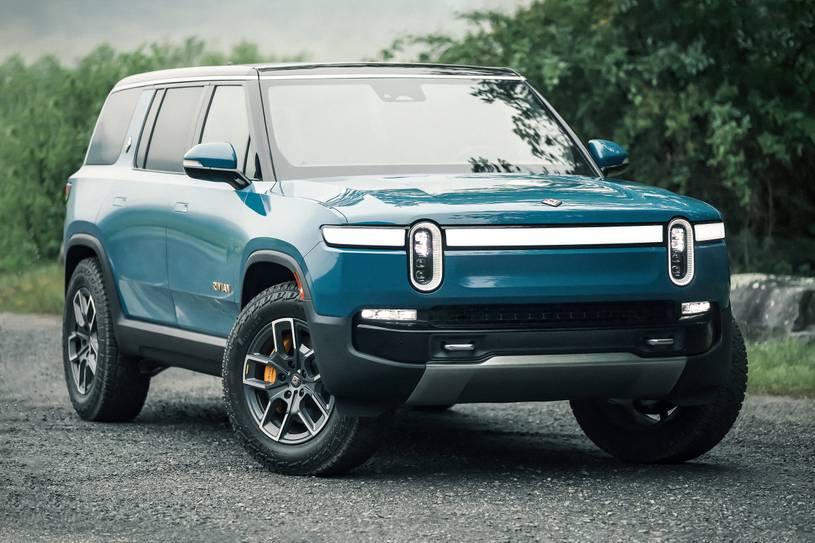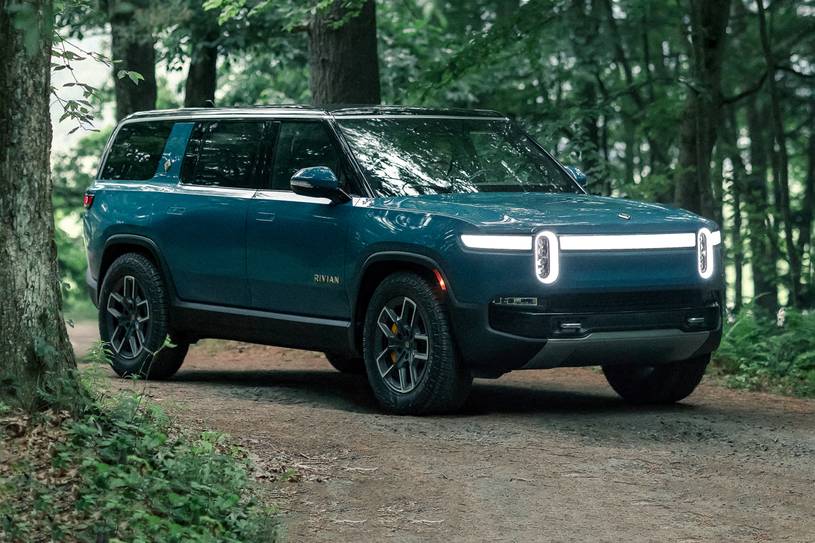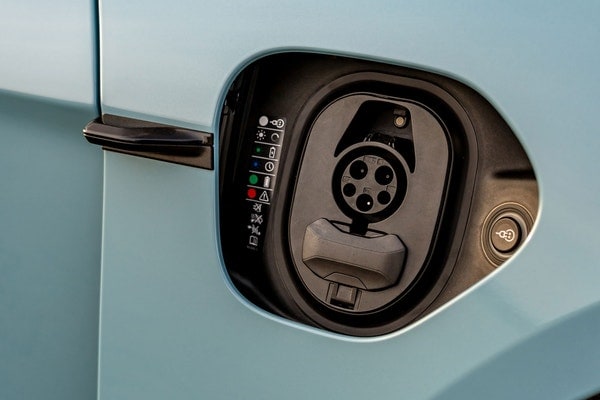As the interior centerpiece, there's a 15.6-inch horizontally oriented center touchscreen that controls almost all of the cabin's functions. For the driver, there's also a 12.3-inch information screen ahead of the steering wheel. Rivian says the R1S supports over-the-air update capability, which means it can automatically incorporate improvements or new features without you having to go to a dealership or service center. There's also onboard Wi-Fi, six USB-C charge ports and a wireless phone charger.
Connecting a smartphone requires that you use Bluetooth. There's no way to connect by USB, and Apple CarPlay or Android Auto smartphone integration isn't available. That means you can't display and use your phone's apps right on the center touchscreen like you can with most other vehicles. There's onboard navigation, music and other available features, but the lack of full smartphone integration is still a letdown.
Advanced driver aids are also here. Rivian calls its system Driver+. It's standard on the R1S and provides features such as adaptive cruise control (maintains a driver-set distance between the R1S and the car in front), a forward collision mitigation system (warns you of an impending collision and applies the brakes in certain scenarios) and lane keeping assist (steers the R1S back into its lane if it begins to drift over the lane marker).
Rivian's lane keeping assist system is limited to specific mapped areas like larger freeways, so it might not function on smaller roads near home. We tried out the adaptive cruise control system and steering assist on a highway and found the systems to operate adequately. The adaptive cruise control system maintained a proper distance from the vehicle ahead, but the lane keeping assist turned off several times when it couldn't differentiate between an asphalt repair groove and a painted lane line on the highway. Hopefully over-the-air updates will improve this system in the future.










